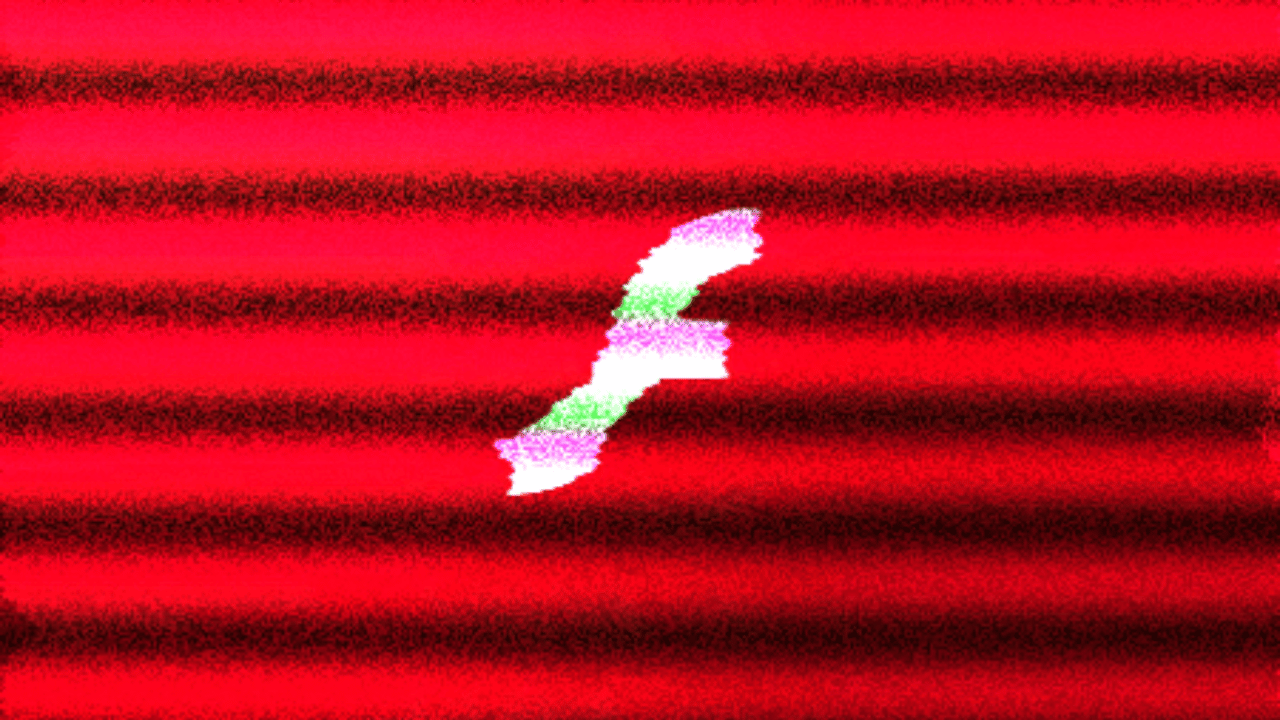
Until a few years ago, Adobe Flash was very important when it came to animation and Internet games. Their complements (plugins) were the most common add-on in all browsers, until smartphones appeared and Flash ceased to be relevant.
As of December 31, 2020, Adobe no longer offers updates to this platform., and in general it could be said that Flash is dead, or almost. This is part of the natural process in which some technologies disappear in order for more efficient ones to appear.
In this article we explain what happened to Adobe Flash, how it came about and how it evolved, or whether you can still update or install this software on your computer.
How did Adobe Flash come about?
December 31, 2022 will mark two years since Adobe shut down Adobe Flash for good. Some years ago, this tool gave shape to practically all the websites in the world and to the thousands of games that were running in the browser.
The history of Flash Player begins with Jonathan Gay, who in 1993 founded a company called Future Web Software. The first development of this company was a program to display animations and vector graphics, called Smart Sketch.
After two years they decide to change their name to Future Splash Animator, and offered it for sale to Adobe in 1995, which rejected the offer.
Despite the rejection the technology was successful and was used by companies such as Microsoft and Disney to display animated content in web browsers. For the year 1996, the Macromedia company decides to buy Future Splash.
Flash's growth
Macromedia renamed the tool Macromedia Flash 10 and released it together with a browser plugin called Macromedia Flash Player.
In the mid-2000s, Flash grew incredibly, fueled by animations, interactive tools, and the popularity of browser games.
This platform became popular thanks to its simplicity, since you only had to install a small plugin and you could immediately use the websites that needed Adobe Flash.
Also, due to its vector-based technology, the file size was minuscule, compared to a video. This was important at the time, since the download speeds back then had nothing to do with what they are today.
Flash enabled many developers to create interactive games, animations, advertisements, and menus.. This tool was even used to create entire websites, which for the time looked great and worked very well.
Adobe's purchase of Flash
In 2005, Macromedia was acquired by Adobe, the same company that turned down an offer to buy Future Splash a decade earlier. Adobe would now take over Flash, developing many more features in the years to come.

The tool, now called Adobe Flash, brought to life much of the Internet's most beloved cartoon and gaming websites.
Sites like Newgrounds emerged as the epicenter of all things Flash. Many online minigame sites at the time also ran on Adobe Flash.
For a while, Adobe Flash was required to view videos on platforms like YouTube, Vimeo, and other online video services. However, the Internet has shown that obsolescence reaches all technology.
The inevitable downfall of Adobe Flash
Although Adobe Flash helped improve the web in its early days, glitches soon surfaced. Suddenly, Flash went from being indispensable for many websites, to everyone wanting to get rid of this tool anyway.
Adobe Flash was installed on more than 90% of Internet-connected desktop computers in 2009. However, at that time the world was beginning to migrate to mobile devices, and Adobe was slow to react.

Another factor in the fall of Flash was the open letter that Steve Jobs (Apple founder) wrote in 2010. In this letter, titled “Thoughts on Flash” Jobs explained why Apple would not let Flash work on the iPhone and the ipads.
Steve Jobs harshly criticized Flash, noting that this tool was awkward to use on touch screens, that it was unreliable, that it was a threat to cyber security, and that it was responsible for the devices consuming a lot of battery.
Jobs commented at the time that what Flash did could also be done with HTML5 and other open technologies, making Flash unnecessary on smartphones or tablets.
Not only Jobs spoke about it. Companies like Symantec had already warned of the many vulnerabilities in Flash. Finally, by the time Adobe got a version of Flash that could work on Smartphones, the Internet had come a long way.
As the iPhone became more popular and open standards like HTML5 and CSS3 were increasingly adopted by developers, Flash's share of use decreased.
Brands like Facebook, Netflix and YouTube were streaming on smartphones without using Adobe Flash. And by November 2011, Adobe ended development of Flash for mobile devices.
When Adobe Flash is no longer safe

Now, the main reason for Flash's downfall was its lack of security. And it is that this tool became a massive target for hackers, forcing Adobe to release frequent updates to fix the constant problems it entailed.
Also, as claimed by Steve Jobs, Adobe Flash was lacking at the time. Even many users were noticing full CPU usage, when they viewed web pages with Flash content.
In 2012, Flash was already a risk to the security of computers, causing Google to decide to integrate Flash into its Chrome browser, to better control its vulnerabilities.
Already for 2015, Apple disabled the Flash plugin in its Safari browser (for Mac) and started blocking some Flash content. As of July 2017, Adobe announced that it would retire Flash in 2020.
And what happened to all the pages that needed Adobe Flash? Many have migrated to technologies and emulators to be able to play Flash content on HTML5 sites, aimed at the most nostalgic. The most successful is Ruffle, used by the Internet Archive and many others.
The Chinese variant of Flash, which displays ads and collects personal data, is developed by the Zhongcheng company. In 2021, Adobe partnered with Harman, a subsidiary of Samsung, to continue to support Flash technology, but only for corporate users.
The current situation of Adobe Flash. Is the end?

As of today, you cannot install Adobe Flash from official sources. If you have the Flash Player plugin installed on your computer, you will see an error message when Flash content appears. Adobe suggests uninstalling Flash to ensure the safety of your computer.
Since Adobe no longer provides security updates, any bugs in your code it can be used to introduce computer viruses or steal your data. You should also not try to install Flash Player from other pages.
If you have Flash Player installed on your computer, go to settings, then applications and hit the Uninstall button. You can also wait for Adobe to show you the option to Uninstall Flash Player.
In any case, Windows is also updated regularly to remove ActiveX versions of Flash Player and prevent it from installing again. However, it is worth checking the process manually.

